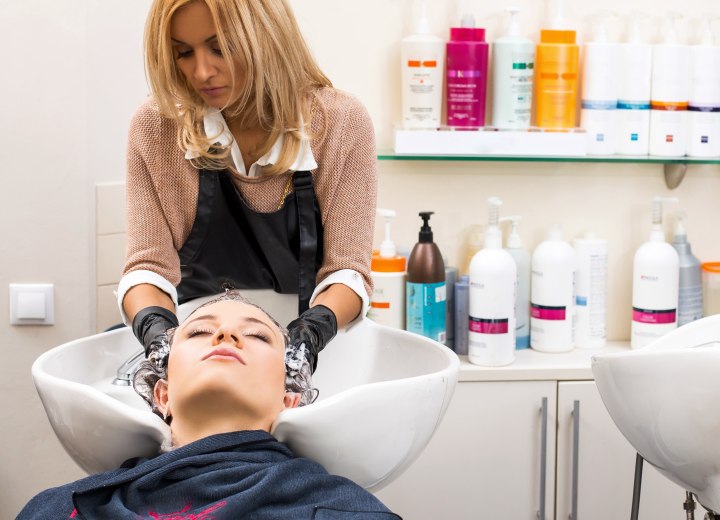Using Shampoo and Conditioner

A: The concept of using shampoo and conditioner cost-effectively means that you don't waste the product by using more than is necessary, or using it improperly. In order to use products so that they are most effective and most cost-efficient you need to read the manufacturer's labels first.
If a product is concentrated, so that you only need 1/2-ounce per client (as opposed to a full ounce per client with a regular formula), comes in a 64-ounce bottle (the same as the regular formula), and costs $18.00 per bottle (compared to $14.00 per bottle for the regular formula), using the concentrate costs you 14-cents per client (as opposed to 21-cents per client with the regular formula).
If you don't adjust your usage to restrict yourself to 1/2-ounce of the concentrate per client and instead treat the concentrate like a regular formula, you'll end up spending 28-cents per client. This ruins the intended benefit of using a concentrated product. Instead of a 33% saving per client, you end up spending 33% more per client.
Making sure your product usage is cost-effective is important primarily to the bottom line of your profit, and the profit of the salon you work for. By making sure you are efficient in the use of your products, they last longer, and you can keep your prices competitive.
For example: Stylists A and B each serve 50 clients per week in the salon for the same services. Stylist A is meticulous in dispensing and using products, and the cost for all products for each of her clients averages to about $1.50. Stylist B isn't as meticulous and uses more of the products than is needed, totaling to an average of $2.00 per client. At 50 clients per week, working 50 weeks per year, Stylist A uses $3,750.00 a year in product, while Stylist B uses $5,000.00 per year.
If the salon charges $15.00 per client for the service given, it earns $37,500.00 per stylist in a year. If they pay the stylist $6.50 per service, the stylist earns $16,250 per year, leaving the salon $21,250.00 per year/stylist. If the salon has to deduct the cost of the products from their share, Stylist A leaves the salon with $17,500.00, while Stylist B leaves only $16,250.00. If the salon does product usage tracking and charges the stylist for the products from the stylists' share of the fees, Stylist A would make $12,500.00, and Stylist B would make $11,250.00.
Either way, Stylist B's laxity on cost-effective usage of product means that he/she spends $1,250.00 more per year on product than Stylist A. That's a significant amount when you are dealing with a salon with multiple stylists who may all be as lax as Stylist B. If the salon is footing the product bill, when it becomes necessary to eliminate a stylist, it's likely Stylist B will be looking for another position, simply because Stylist A is more profitable.
©Hairfinder.com
See also:
Hair care
Is expensive shampoo better?
What can happen if you put too much shampoo on hair